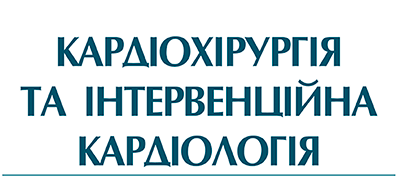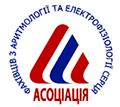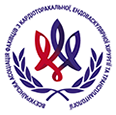Original Research
DOI: http://doi.org/10.31928/2305-3127-2018.3.515
The criteria for choice of myocardial revascularization method in patients with stable coronary artery disease in routine clinical practice
O.A. Yepanchintseva 1, 2, O.J. Zharinov 2, K.O. Mikhaliev 3, A.V. Khokhlov 1, B.M. Todurov 1, 2
1 Heart Institute, Ministry of Health, of Ukraine, Kyiv, Ukraine
2 Shupyk National Medical Academy of Postgraduate Education, Kyiv, Ukraine
3 State Scientific Institution «Scientific and Practical Center of Preventive and Clinical Medicine» State Government Affairs, Kyiv, Ukraine
The aim – to study the clinical, echocardiographic and angiographic parameters, determining the method of myocardial revascularization (MR) in patients with stable coronary heart disease (CAD), selected in routine clinical practice according to pre-specified anatomical criteria.
Materials and methods. We performed retrospective observational single-center study and analyzed data from the patients with stable CAD (n = 341), suitable for both methods of MR – percutaneous coronary intervention (PCI) or coronary artery bypass grafting (CABG), according to the pre-specified anatomical criteria. We analyzed demographic, clinical, echocardiographic, angiographic parameters and health related quality of life (HRQoL), assessed by two questionnaires (MLHFQ and SF-36). The selected patients’ sample consisted of 284 (83.3 %) males and 57 (16.7 %) females, with age range from 32 to 83 years, mean age (61 ± 9) years. Prior myocardial infarction was registered in 252 (73.9 %) patients. 329 (96.5 %) patients had stable angina of different functional classes. PCI was performed in 68 (19.9 %) patients, CABG – in 273 (80.1 %).
Results. CABG group, compared to PCI, was characterized by the higher grade of angina severity, namely the higher frequency of angina III/IV functional classes: 87.9 % vs. 69.1 %, respectively (p < 0.001). In addition, patients selected for CABG were more likely to have diabetes mellitus (34.8 % vs. 17.6 %, respectively, p = 0.006). The baseline pharmacological therapy in CABG group, as opposed to PCI, was characterized by the higher prescription rate of beta-blockers (78.0 % vs. 55.9 %, respectively, p < 0.001), organic nitrates (48.4 % vs. 11.8 %, respectively, p < 0.001), as well as oral antihyperglycemic agents (22.0 % vs. 4.4 %, respectively, p = 0.001). The PCI group was characterized by better HRQoL, compared to CABG. Patients with isolated anterior interventricular branch of left coronary artery, or with 2-vessel disease, were more likely to be selected for PCI. On the contrary, CABG was a more preferable MR method in patients with 3-vessel disease.
Conclusions. CABG group, as compared to PCI, was associated with the higher prevalence of obesity, diabetes mellitus, including its severe course, the higher grade of angina severity, and worse HRQoL, in addition to the higher frequency of 3-vessel disease. In patients with similar coronary artery lesions, the potential criteria for MR method include such characteristics, as severity of symptoms, comorbidity and prior CAD treatment.
Key words: myocardial revascularization, coronary artery disease, coronary artery bypass grafting, stenting.
| [PDF] | [References] |








